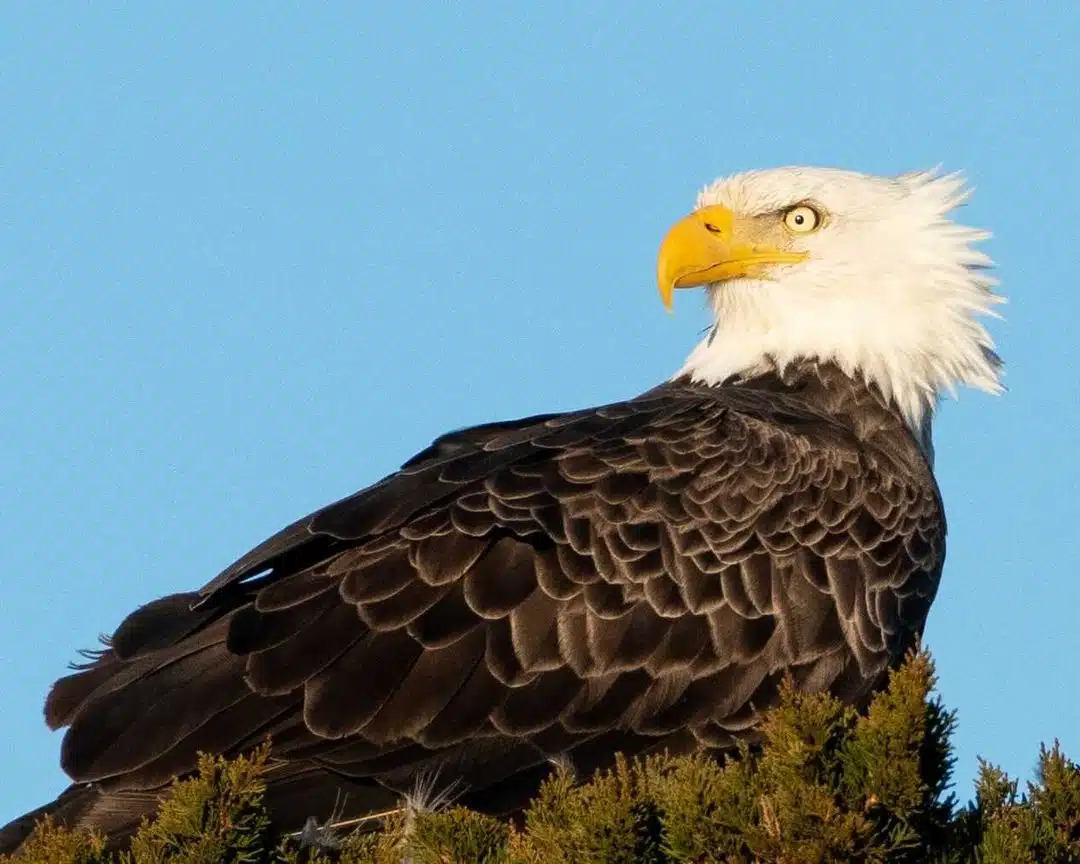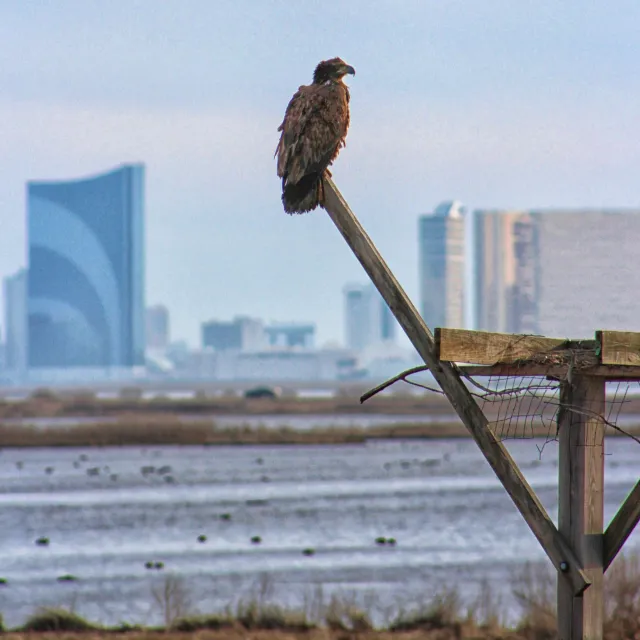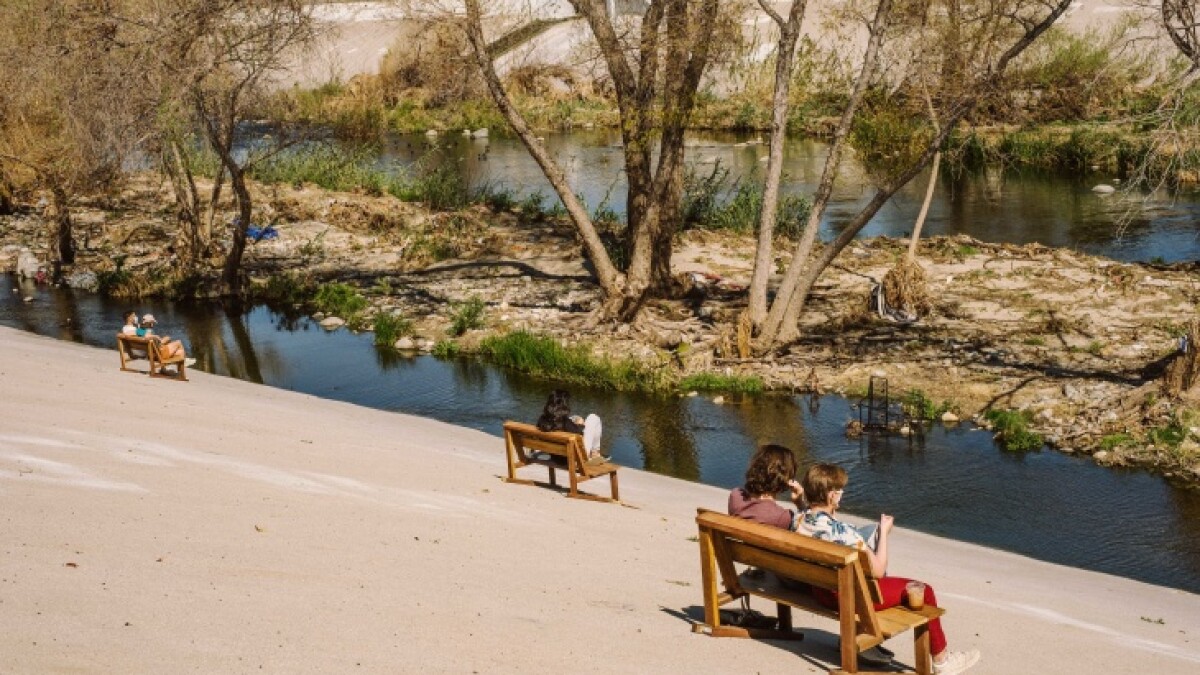Bird Poetics - Super Bowl

The Dalliance Of The Eagles, Walt Whitman (1880)
SKIRTING the river road, (my forenoon walk, my rest,)
Skyward in air a sudden muffled sound, the dalliance of the eagles,
The rushing amorous contact high in space together,
The clinching interlocking claws, a living, fierce, gyrating wheel,
Four beating wings, two beaks, a swirling mass tight grappling,
In tumbling turning clustering loops, straight downward falling,
Till o’er the river pois’d, the twain yet one, a moment’s lull,
A motionless still balance in the air, then parting, talons loosing,
Upward again on slow-firm pinions slanting, their separate diverse flight,
She hers, he his, pursuing.

Juvenile bald eagle stakes out an osprey perch at Forsythe Wildlife Refuge with Atlantic City’s skyline in the background.
The American Bald Eagle has made a heroic comeback! A flurry of feathered news lately centers on New Jersey, which just became the latest state to DELIST the Bald Eagle from the endangered species list in January 2025. Once there was only a single nesting eagle pair in all of the Garden State; now it boasts over 300. On his way out the door, former President Biden also named the eagle as our national bird, which, as appropriately observed nearly everywhere, was surprising in itself that it took until our 248th year since the Declaration of Independence to make official. (Typical of our elected leaders, I might add….) For further reading, AP: “American bald eagle is having a moment, culturally and ecologically.”
The eagle resurgence has its strong hold in South Jersey, where the raptors have ample marshland to form habitat throughout the Delaware Bay Shore and up the intracoastal waterway. Here, due to macro trends in population growth and consistency at the state level to preserve undeveloped land, abundant habitat has paired with tighter regulations to ensure the safety of the species. Following the establishment of the Environmental Protection Agency in 1970, the department enacted with Congressional backing two key measures: the banning of DDT in 1972 and the passage of the Clean Water Act in 1974. Together these regulations ensured that fifty years later these majestic birds are safe to delist from protected species classification. The typical lifespan for a bald eagle is between 20-30 years; eagles hatching today are the grandchildren or great-grandchildren of that lone intrepid pair who refused to perish.
Peak eagle viewing season coincidentally is right now in New Jersey. Last week, a consortium of wildlife nonprofits and government partners held the Annual Eagle Festival in Mauricetown, Cumberland County. For anyone who has not explored this stretch of South Jersey, it is truly the land that time forgot. You can glimpse at the decimated oyster industry at the Bayshore Center in Bivalve, or traipse around desolate marsh at a number wildlife refuges. (It should be noted, that while the bald eagle is a charismatic megafauna, oysters, too, have enjoyed an ecological and cultural resurgence with numbers are rebounding throughout the region.) It is no wonder that birds of all feathers love this natural space in the densest state in the union.
The occasion of an Eagles Super Bowl also always brings me back to reflect on a departed mentor and inspiration, Lewis MacAdams. Lewis founded Friends of the Los Angeles River in 1987, partly out of irony and partly out of nothing to do. Early “happenings” were radical performance art; he once painted his body blue and donned a white suit to march out of the river channel and into a DTLA venue as “Riverboy”. Lewis meant a great deal to me professionally and personally. So, being a son of South Jersey, when I read the following poem, it had a feeling of fated encounter. Surely I remember this Super Bowl Sunday on February 6, 2005 - I turned 17 the next day and took my driver’s test, opening me up to the whole wide world and cosigning me to the sins of the petrochemical vice. About ten years down the road I met Lewis, where else but on the Los Angeles River.
As a poem, I also believe “The Mask” to be one of his strongest. Unlike lengthy reports from the Bolinas farm or fantasies of Marilyn Monroe and Walt Whitman in holy matrimony, it is lean. With steady hand and unflinching gaze it aims for the heart of the matter and shoots right through it. Classically, Lewis places the river and himself in the concrete world - the one where the sportsbook is clear on favorites and underdogs, a clarity not guaranteed in other affairs in life - and not a metaphorical “river of time.” He hangs a sharp left toward the wisdom acquired specifically in nature, and ties it off with a hauntingly beautiful note of tripartite negotiation between the sedge and its avian commissars; treaties that failed to anticipate the ugly humanness of our impending and all-consuming sprawl. Then, in closing, his final meditation is a wonderful distillation of his spirit; one part loser with no where to go, like all of us at some point or other, and two parts civic mystic, obsessed and crazy and spending Super Bowl Sunday meditating that his money is on the birds and not the patriotic war machine.
37 - Riverboy: “The Mask”, Lewis MacAdams (2005)
I built this river —
not with my hands,
but with my imagination. Now it’s
Super Bowl Sunday, and the Eagles
are underdogs to the Patriots;
so practice the patience
that you learned from the sedge,
unchanged for millenia
because it made a deal
with the wading birds
to write their sacred names
with cloud bursts on moving water.
I built this river, not with my dreams
but with my drama;
though now I feel it ebbing, drying
up and cracking like a mud man’s mask.
I built this river with my karma,
just so I would have a park bench to sit on
when I had no
other place to go.

During the peak of the pandemic, one enterprising urbanist fabricated and installed benches along the Los Angeles River out of surplus material. This remarkably popular and socially distanced example of tactical urbanism lasted all of a week before the goons in County Flood and the Army Corps had them removed. Read more at LAist.